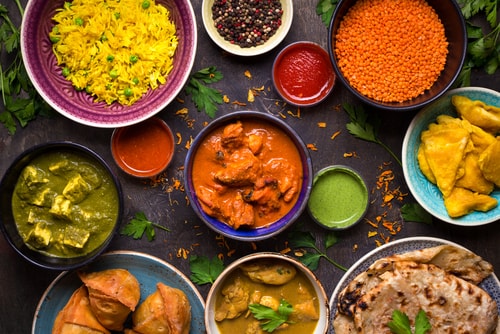Secrets of Making Incredible Indian Food in Your Multi Cooker

Indian recipes are infused with exciting flavors that inspire. Despite how delightful the dishes taste, many shy away from Indian cooking, thinking of the time-consuming preparation and overall complexity.
Gone are those days upon the arrival of the multi cooker! The kitchen gadget has earned the reputation of making life easier with automation, where minimal prep equates to maximum convenience. One among the great worlds opened up by the multi cooker is Indian cuisine, where the spectrum of flavors inherent to Indian dishes are brought to your dinner table. It's time you learn the secrets of making incredible Indian food in your multi cooker.
Know Your Spices
Spices and herbs are abundant in Indian dishes, but that doesn't mean amassing the entire list to fit your entire cupboard. A few of the best spices, bought from an authentic local store or online, will let you unravel cuisine secrets and explore an endless depth of flavor. The traditional spices extensively used for Indian cuisine are:
- Dhania (Coriander) - an aromatic spice in Indian curries which when mixed with jeera (cumiin) acts as a thickener.
- Cumin - adds intense flavor with a smoky note to your dish.
- Green cardamom - best bought as seeds rather than ground to retain its light and sweet flavor.
- Mustard seeds - go for yellow for a balanced and nutty flavor, and brown or black if you want more kick to your mustard.
- Haldi (Turmeric) - pungent and earthy flavor that endows curries a beautiful golden colour.
Commonly used herbs are bay leaf, cilantro, curry leaf and mint, while savoury dishes call for onions, salt, sugar, and coconut milk. Now, for the most popular spice that forms base of most Indian dishes, let's not forget the Garam Masala.
Though the name translates to hot spice, it's not really hot, but warm and fragrant with the wonderful blend of 7-18 ground spices. No version is more authentic than the other, and it's best made yourself to cater to your own personal taste. Garam masala often includes black and white peppercorns, cloves, cinnamon, coriander, black and green cardamom, cumin, nutmeg and bay leaf.
Unlocking the Mystery with Your Multi Cooker
Indian cooking is not all spices. The secret is learning of the beauty and subtlety of the techniques used to produce each flavorful dish. One all-important tip is to never skip on the tadka, the process of blooming spices in oil where you wait for seeds to pop and release the pleasant aromas.
Using the right cooking equipment will help you achieve the most intense flavors in Indian food with ease. Simply set your multi cooker to SAUTE to heat oil and temper the spices. When cooking dishes like chicken and rice biryani, this is where you add onions next and cook until they're deeply browned. Switch to RICE upon adding rice and water for a quick and easy meal to serve your family. You can use the slow cooker function or pressure cooker, depending on your recipe.
The Chana Masala made from dried beans would take about 5-10 hours to cook, with no stirring whatsoever. You can chop and toss everything in and come home to homemade Indian cooking. Legumes and grains won't need soaking when using a multicooker-pressure cooker device, yet remain fresh, easily digestible, and delicious.
Chicken, beef, lamb, seafood, and chickpeas are best served with a side of basmati rice or naan bread slices for a fantastic Indian experience right at home! Follow the tips and secrets you've just unraveled, and cooking Indian food can definitely be an enjoyable process.
Read also:
-
 30 April 2017 How to Cook the Perfect Steak
30 April 2017 How to Cook the Perfect Steak -
 15 March 2017 Original Chocolate Cake Recipes
15 March 2017 Original Chocolate Cake Recipes -
 21 May 2017 3 Vegetarian Dishes that are Packed with Protein
21 May 2017 3 Vegetarian Dishes that are Packed with Protein
You found 120 egg(s) and 23 rabbit(s). Your discount — 20%!











